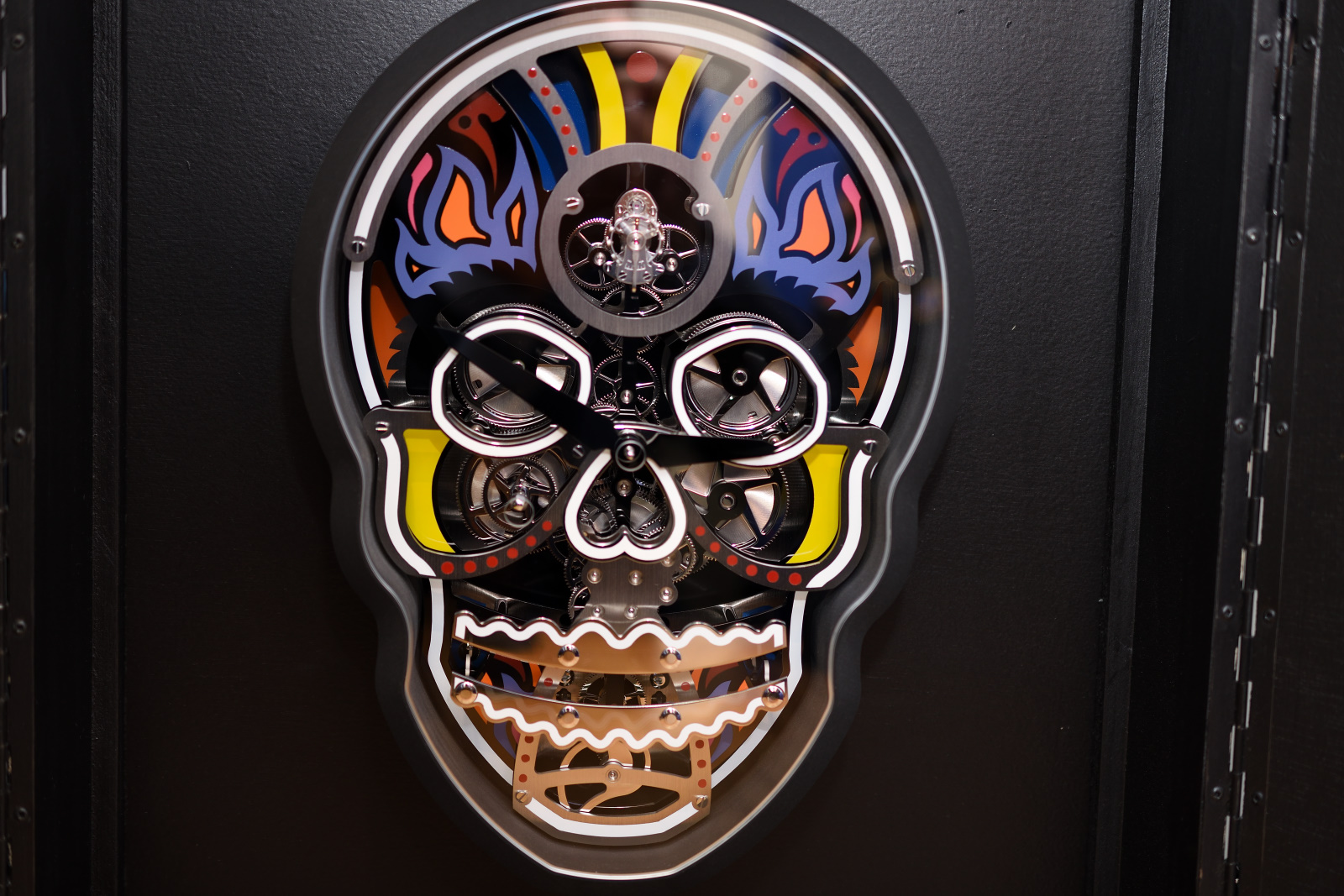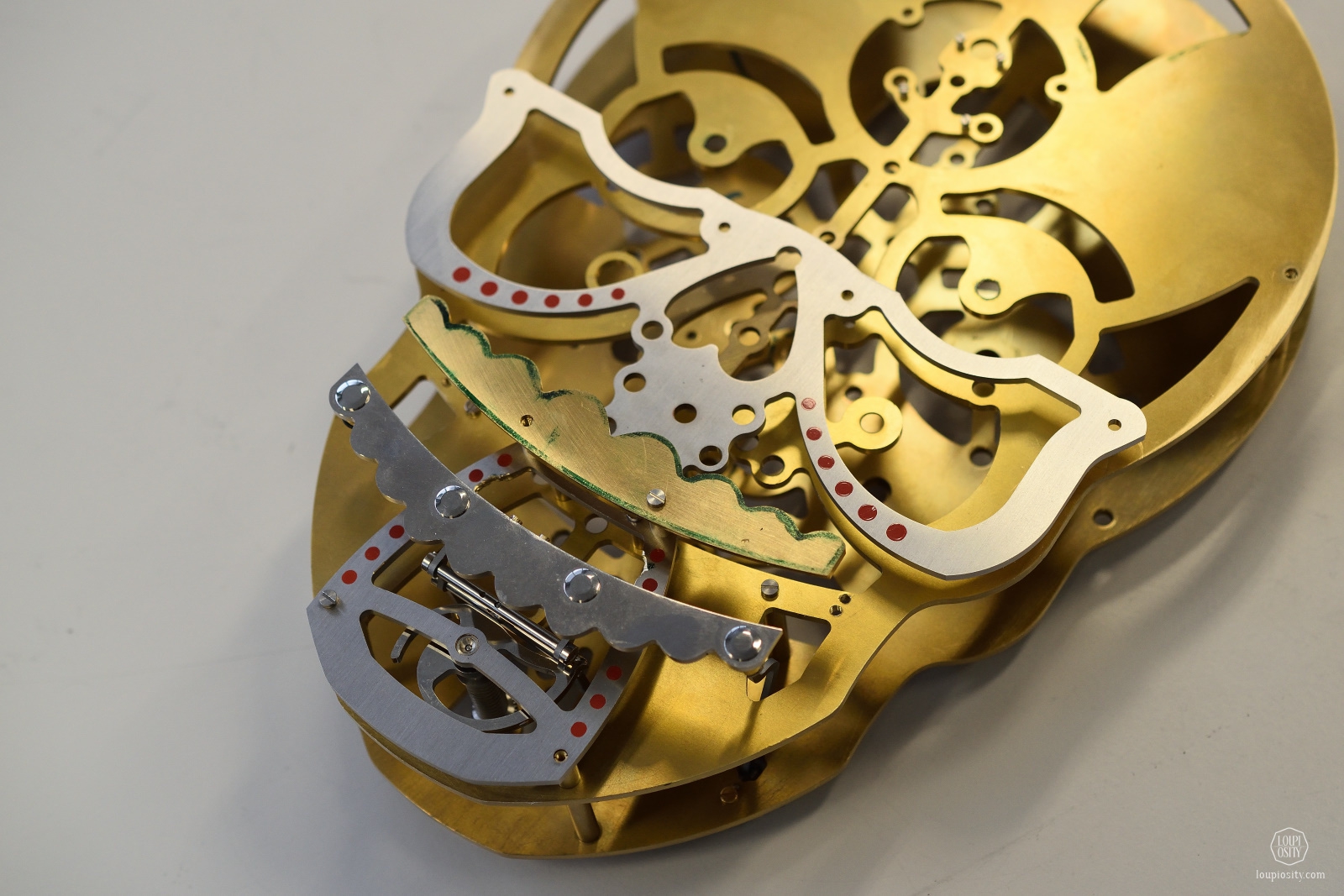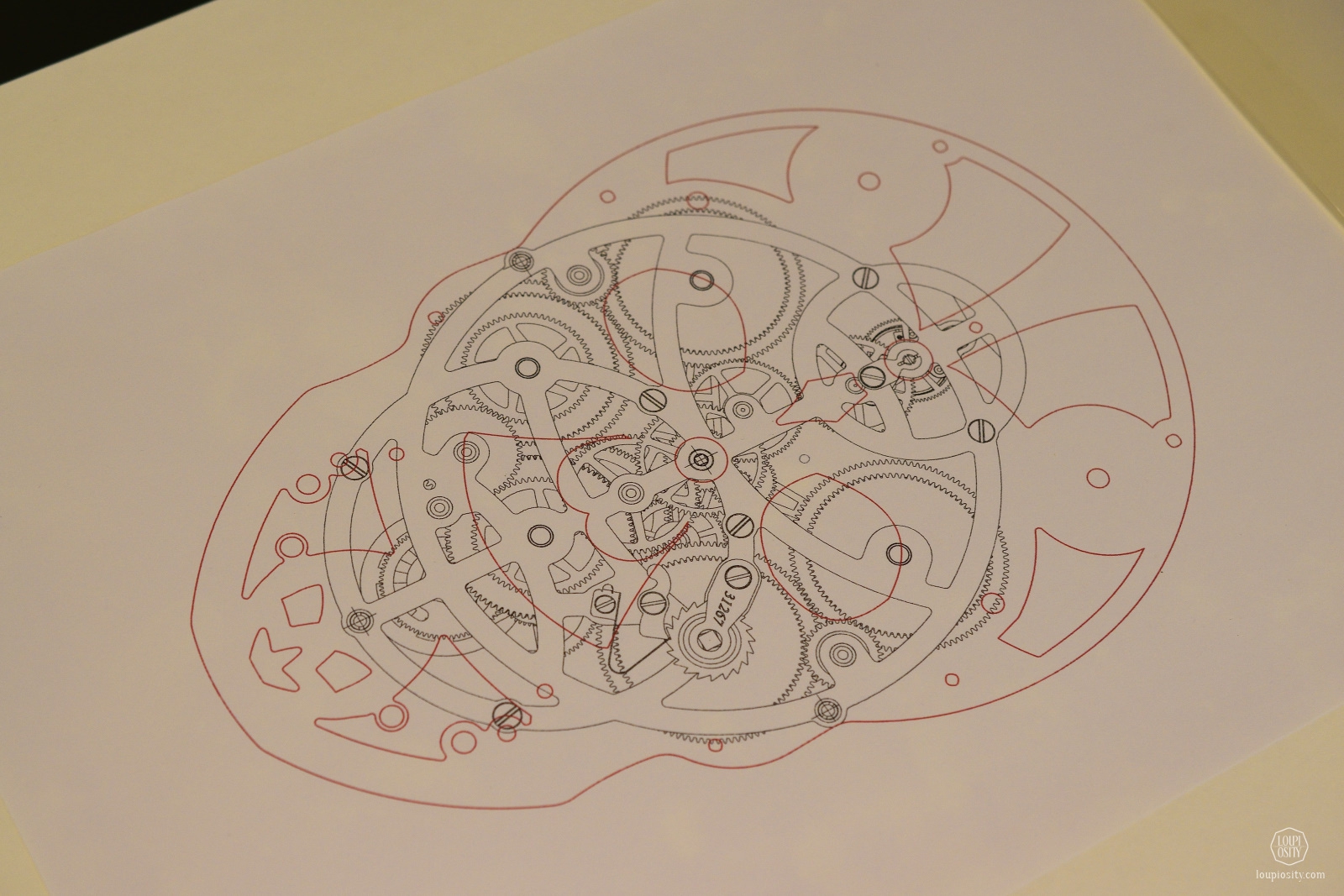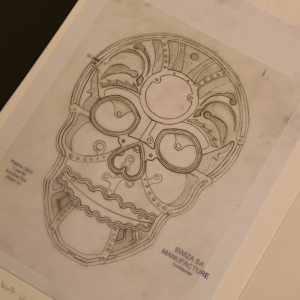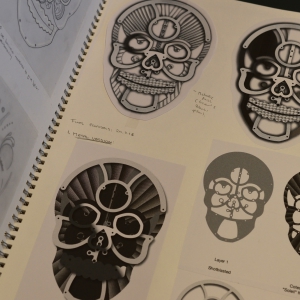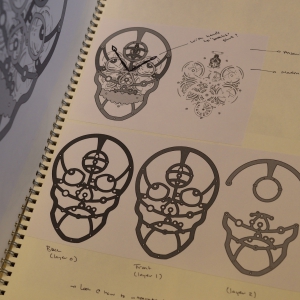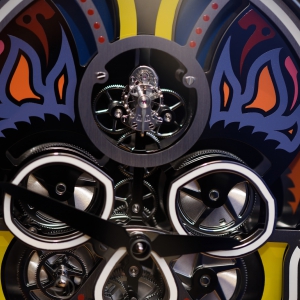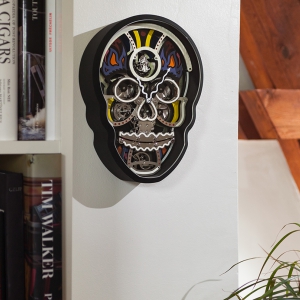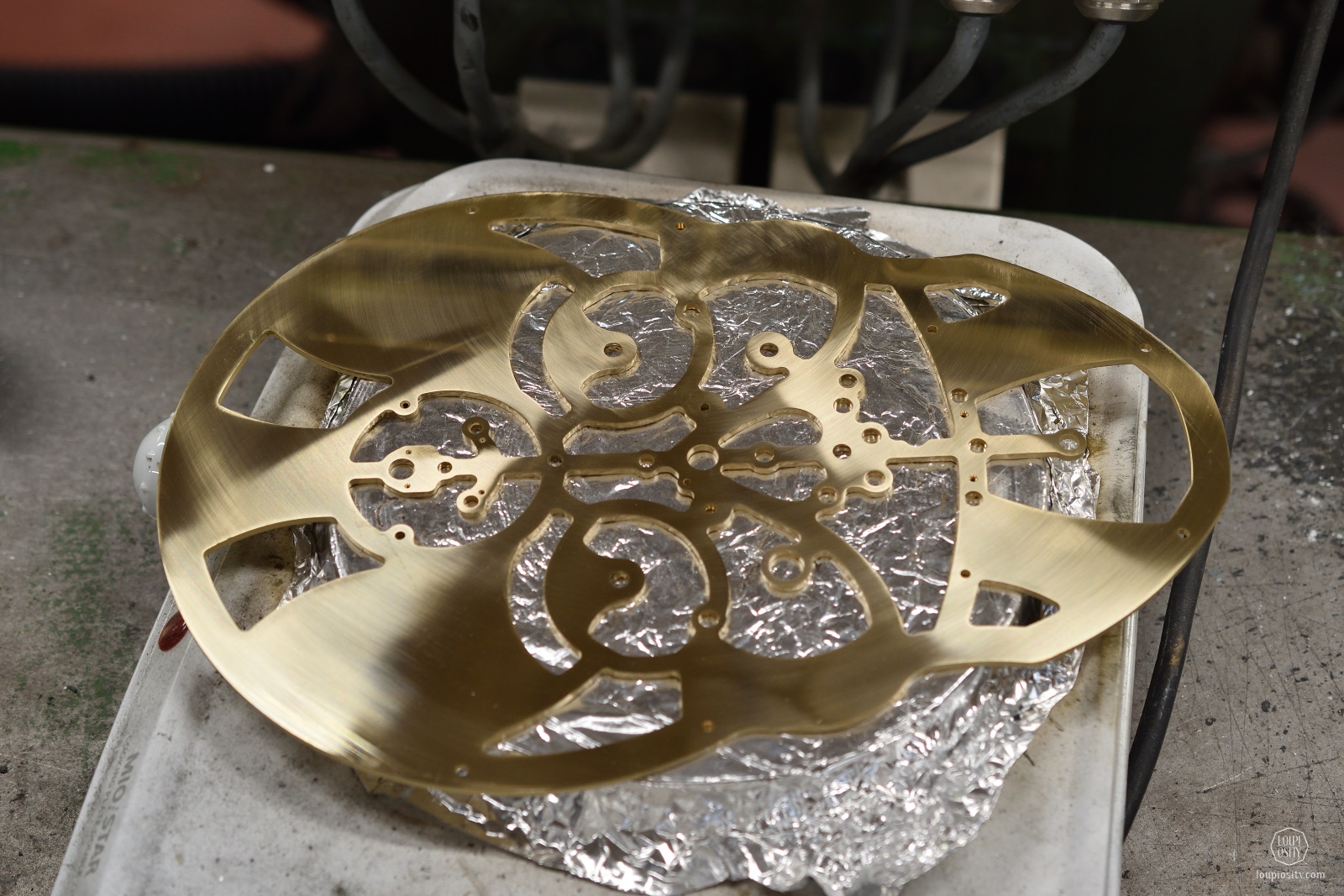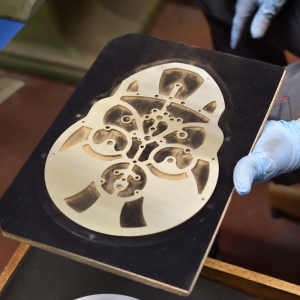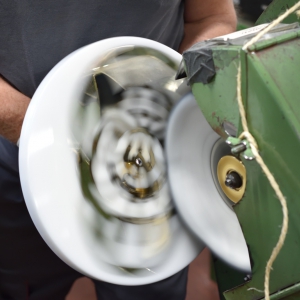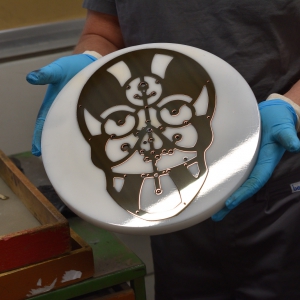In mid-May I visited the L’Epée 1839 Manufacture in Delémont to discover a special horological artwork co-created with Fiona Krüger.
Throughout the centuries clocks were not only the tools of time measurement but also status symbols. There were significant technical developments to improve accuracy and reliability but the artistic designs and the use of precious materials made the clocks an “object of desire” for noble and royal people. Standing or hanging clocks and carriage clocks became beloved treasures of the wealthy society.
In the 21st century both clocks and even wristwatches are not the question of necessity. Almost everyone has a mobile phone or other devices to check the time, watches are more like an accessory, a vehicle of personal expression or the passionate articulation of the respect for mechanical creations. This statement is even more true for clocks. They represent an intimate, special area of luxury – while the wristwatches are visible for people around us, a clock is a hidden gem in our home or office.
L’Epée’s origins date back to 1839. It was founded by Auguste L’Epée together with Pierre-Henri Paur from Geneva to make music boxes and watch components. Soon the company established itself in watch and clock making. The Manufacture started producing platform escapements for alarm clocks and carriage clocks from 1850 onwards. They developed and patented high-quality platform escapements and mechanisms and continuously increased their production throughout the decades (in 1889, for example, they made 200,000 platform escapements).
From around 1975 onwards the brand has been known for high-end clocks, including exceptional table clocks, classic carriage clocks, contemporary design clocks and avant-garde horological sculptures.
L’Epée 1839 is among the very few Swiss Manufactures who has the skills and means essential to the production of luxury mechanical clocks, all united under one roof. On a sunny spring morning I visited the manufacture in Delémont in the Swiss Jura.
Having preserved the know-how, the manufacture combines modernity and fine-clock-making traditions. Some of their creations are extremely innovative, but the artisans are still using many traditional tools. Their expertise is sought after and they have formed a number of partnerships for supplying parts and mechanisms – a special one with MB&F. The team of Maximilian Büsser and L’Epée have been working together to create very interesting contemporary design clocks, like the Starlet, Sherman, Balthazar or the Destination Moon recently.
The Vanitas clock by Fiona Krüger and L’Epée 1839
The manufacture employs outstanding artisans, but L’Epée loves to co-create with other talented craftspeople. The cool Scottish designer Fiona Krüger, whose work we already praised here is one of them.
With her background in Fine Arts, Fiona’s image of a timepiece is naturally different. She has designed lovable skull wristwatches with amazing details. This time she decided to go for something bigger: a wall clock in cooperation with L’Epée.
Vanitas, the crazy suggestive skull home décor, came alive on 25th of May. The sketch books I browsed at the pre-viewing testifies the intensity of the work performed by Fiona and L’Epée, which resulted in the two limited editions – the Vanitas Black and the Vanitas Color each limited to 50 pieces. It also reveals the challenges they faced due to their restless experimental spirit, such as the “yawning” power reserve indicator.
As Fiona summed it up, she “partners with suppliers and artisans who are looking for a distinctive, personal and poetic approach to watch design, each one a leader in their specific discipline and keen to push the boundaries of this traditional industry. “
The design
Skulls have always accompanied the living one way or another. Times, cultures, locations, attitudes and circumstances have given the symbol a different meaning, but in most civilisations skulls have been messengers. They have helped the living to contact the dead and the gods, they have provoked fear, signified danger or diseases, were reminders of mortality, underpinned wisdom and superiority over others. Skull depictions have appeared in all cultures with different meanings: the world is mere illusion and transience by Pieter Claesz on “Vanitas Still Life with the Spinario” from the Dutch Golden Ages; an interesting drawing “All Is Vanity” by the American illustrator Charles Allan Gilbert; an anamorphic skull on the painting of Holbein, “The Ambassadors”; “For the Love of God” diamond skull by the daredevil English artist, Damien Hirst; or even on a skirt in the very latest Dior Resort collection – just to name a few.
Vanitas by Fiona Krüger and L’Epée 1839 is a mechanical skull clock, with moving eyes and mouth and a distinctive case, shaping a skull. It has multi-layered bridges each with a specifically chosen finishing and décor, bringing depth to this sculpture. As many of Fiona’s other pieces, the Vanitas is inspired by “Memento mori” (the Latin phrase for “remember that you have to die”) and proclaims the appreciation of life at the same time.
The colours are influenced by her childhood memories in Mexico City and the Día de los Muertos (Day of the Dead), a holiday renowned throughout Mexico. Seven colours have a special meaning in the Mexican feast: blue for trust, yellow for death, purple for grief, red for life, white for purity, pink for celebration, orange for the sun and black for mortality.
Note that the hands on the final version have changed compared to the prototype we saw at Baselworld earlier this year. The first two photos in the next gallery show the prototype, while the 3rd is the final.
The movement
Vanitas is engineered and crafted by L’Epée 1839, and incorporates circa 400 components.
As Arnaud Nicolas, the CEO of L’Epée explains: “It’s not just a case of double the size of the components, double the time it takes to finish them. The complexity increases exponentially. For polishing you need to apply the same pressure as you would finishing a watch movement, but on a bigger surface, and that’s more challenging. It’s thanks to the experience and dexterity of our clockmakers that the Vanitas clock can feature such superlative fine-finishing.”
The hours and minutes are shown by the clock’s hands, and a power reserve indicator is integrated into the mouth of the skull. As Vanitas loses power it starts to yawn, indicating it needs to be wound up. The 35 days power reserve ensures a monthly winding ritual with your special skull.
Photo credits: L’Epée 1839, Fiona Krüger, Loupiosity.com.
All registered trademarks are property of their respective owners.
All rights reserved.

